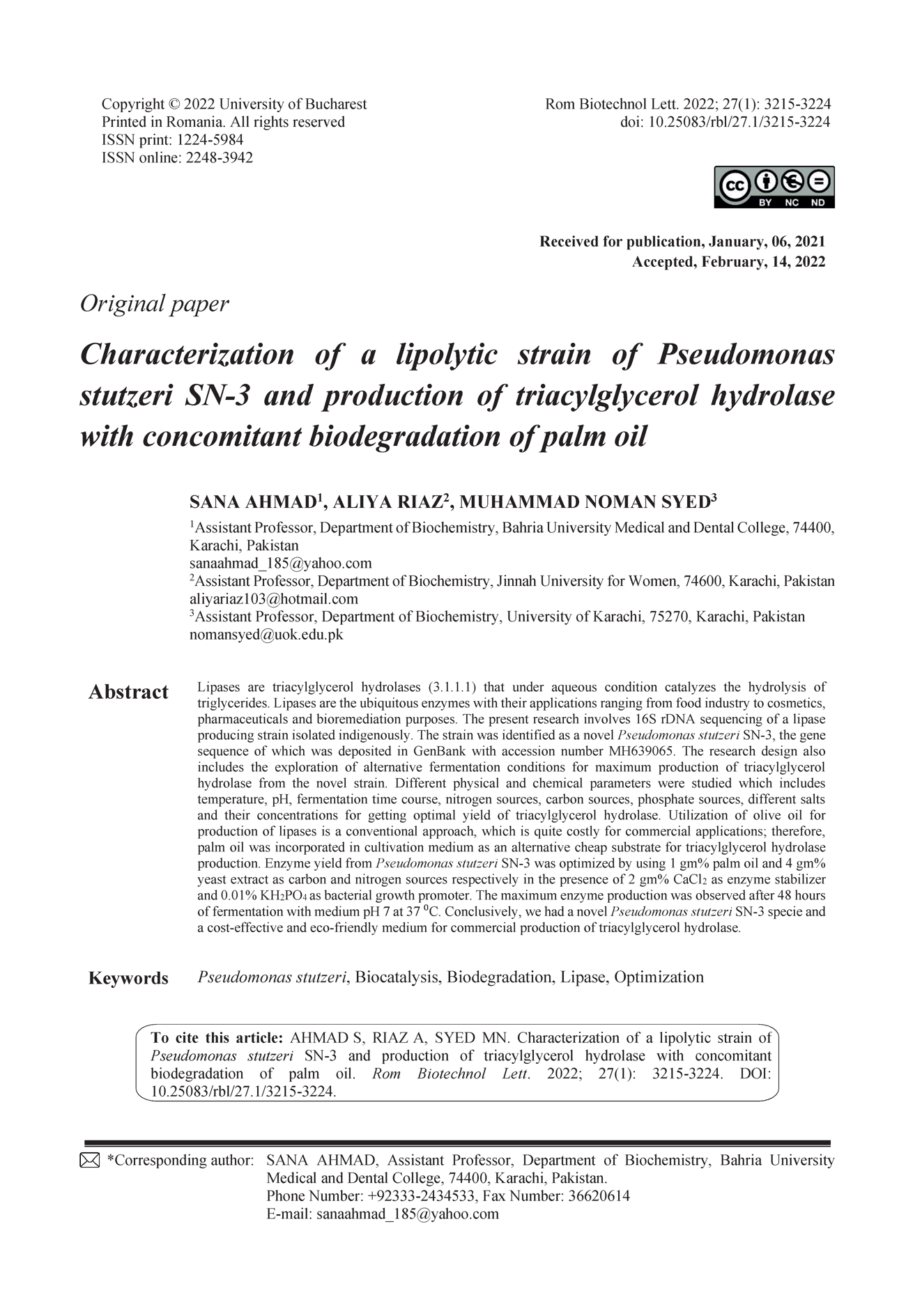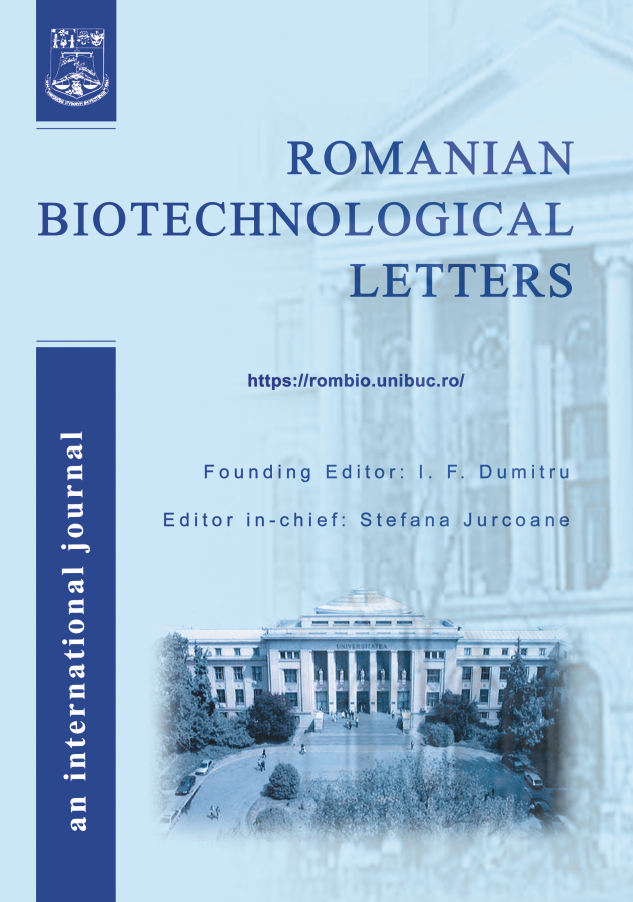Characterization of a lipolytic strain of Pseudomonas stutzeri SN-3 and production of triacylglycerol hydrolase with concomitant biodegradation of palm oil
DOI:
https://doi.org/10.25083/rbl/27.1/3215-3224Cuvinte cheie:
Pseudomonas stutzeri, Biocatalysis, Biodegradation, Lipase, OptimizationRezumat
triglycerides. Lipases are the ubiquitous enzymes with their applications ranging from food industry to cosmetics, pharmaceuticals and bioremediation purposes. The present research involves 16S rDNA sequencing of a lipase producing strain isolated indigenously. The strain was identified as a novel Pseudomonas stutzeri SN-3, the gene sequence of which was deposited in GenBank with accession number MH639065. The research design also includes the exploration of alternative fermentation conditions for maximum production of triacylglycerol hydrolase from the novel strain. Different physical and chemical parameters were studied which includes temperature, pH, fermentation time course, nitrogen sources, carbon sources, phosphate sources, different salts and their concentrations for getting optimal yield of triacylglycerol hydrolase. Utilization of olive oil for production of lipases is a conventional approach, which is quite costly for commercial applications; therefore, palm oil was incorporated in cultivation medium as an alternative cheap substrate for triacylglycerol hydrolase production. Enzyme yield from Pseudomonas stutzeri SN-3 was optimized by using 1 gm% palm oil and 4 gm% yeast extract as carbon and nitrogen sources respectively in the presence of 2 gm% CaCl2 as enzyme stabilizer and 0.01% KH2PO4 as bacterial growth promoter. The maximum enzyme production was observed after 48 hours of fermentation with medium pH 7 at 37 ⁰C. Conclusively, we had a novel Pseudomonas stutzeri SN-3 specie and a cost-effective and eco- friendly medium for commercial production of triacylglycerol hydrolase.




